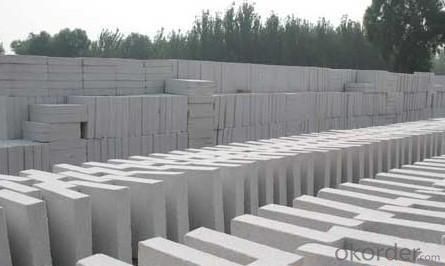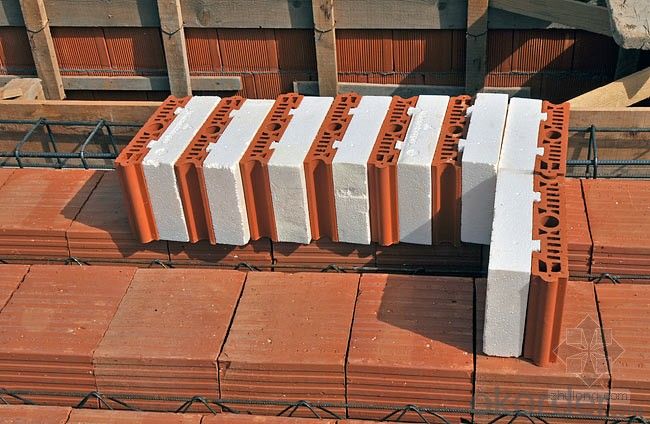Refractory Mullite Insulating Refractory Brick JM 39
- Loading Port:
- Shanghai
- Payment Terms:
- TT OR LC
- Min Order Qty:
- 20 m.t.
- Supply Capability:
- 20 m.t./month
OKorder Service Pledge
OKorder Financial Service
You Might Also Like
Okorder series heat insulation brick
Okorder series thermal insulation brick is an effective, energy saving, low carbon, environmental protection advanced, according to the ASTM standard manufacturing products. Okorder series products have all kinds of materials in the field of metallurgy, industrial furnaces, aluminum, the best Li Ning petrochemical and insulation, electric power and glass ceramics. They can be used as part of an insulation or not to melt. Products have been widely used in the following furnace, achieved satisfactory results.
Application of heat preservation brick
Metallurgical Industry: blast furnace, hot blast furnace, heating furnace, etc..
Petrochemical Industry: ethylene cracking furnace, hydrogen furnace, the main furnace, heating furnace, etc..
Ceramic industry: roller kiln, kiln, etc..
Glass industry: glass furnace regenerator, etc.
Carbon industry: carbon furnace, etc..
Aluminum electrolysis industry: aluminum reduction cell, etc.
Other industries: tunnel kiln, shuttle kiln, etc..
Advantages of heat insulation brick
Low thermal conductivity: many air holes will bring good thermal insulation effect, energy saving.
High crushing strength: high crushing strength, volume stability.
Low heat storage: small heat storage, absorb more heat, energy-saving effect is obvious.
Chundu: High-speed Rail, low content of alkali metal impurities.
Accuracy: the size of the brick machining precision, cutting and grinding the special shape, speed up the brick.
Insulating brick


- Q:Are insulating fire bricks resistant to phosphoric acid?
- Phosphoric acid, being a strong acid, has the potential to react with and corrode various materials, including fire bricks. Although certain fire bricks may possess a degree of resistance to acidic conditions, insulating fire bricks are generally not equipped to endure prolonged exposure to phosphoric acid without experiencing notable deterioration. As a result, it is advisable to employ acid-resistant materials like acid-resistant bricks or linings when handling phosphoric acid or other potent acids.
- Q:Can insulating fire bricks be cut to custom sizes?
- Indeed, custom sizes can be achieved when cutting insulating fire bricks. These bricks are commonly crafted from lightweight materials like ceramic fibers or lightweight aggregates, facilitating their relative ease of cutting. A range of tools, including saws, knives, and specialized cutting equipment, can be utilized to achieve this. However, it is crucial to prioritize proper safety measures and employ suitable tools and techniques to attain a precise and flawless cut. Furthermore, consulting the manufacturer's instructions or seeking expert guidance is recommended to ensure that the cutting procedure does not compromise the structural integrity or thermal characteristics of the insulating fire bricks.
- Q:Are insulating fire bricks resistant to slag attack?
- Yes, insulating fire bricks are resistant to slag attack. These bricks are made of high-quality refractory materials that can withstand extreme temperatures and harsh conditions, including exposure to slag. They have low thermal conductivity and excellent insulation properties, making them ideal for applications where slag attack is a concern.
- Q:Can insulating fire bricks be used in sewage treatment plants?
- Yes, insulating fire bricks can be used in sewage treatment plants. Insulating fire bricks are designed to have excellent thermal insulation properties, which make them suitable for high-temperature applications. In sewage treatment plants, there are often processes that involve the use of heat, such as anaerobic digestion or sludge incineration. Insulating fire bricks can be used to line the walls, floors, and roofs of the incinerators or digesters, helping to retain the heat generated and improve energy efficiency. Additionally, sewage treatment plants often deal with corrosive and abrasive environments due to the presence of chemicals, acids, and solids in the wastewater. Insulating fire bricks are made from high-quality refractory materials that are resistant to chemical attack and erosion. This makes them a suitable choice for lining tanks, pipes, or other equipment that may come into contact with corrosive substances. Furthermore, insulating fire bricks are lightweight, which makes them easier to handle and install compared to other types of refractory materials. This can be beneficial in sewage treatment plants where there might be a need for frequent maintenance or repairs. Overall, insulating fire bricks are a versatile and durable option for use in sewage treatment plants, providing excellent thermal insulation, resistance to corrosive environments, and ease of installation.
- Q:Are insulating fire bricks suitable for insulation in heat treatment furnaces?
- Yes, insulating fire bricks are suitable for insulation in heat treatment furnaces. Insulating fire bricks are designed to withstand high temperatures and provide excellent thermal insulation, making them ideal for use in heat treatment furnaces where maintaining consistent and controlled temperatures is crucial. These bricks help minimize heat loss, increase energy efficiency, and ensure uniform heating throughout the furnace, resulting in improved performance and cost savings.
- Q:Can insulating fire bricks be used in the construction of lime production molds?
- Yes, insulating fire bricks can be used in the construction of lime production molds. Insulating fire bricks are designed to have high thermal resistance, making them ideal for applications that require insulation and protection from high temperatures. Lime production molds often involve high temperatures during the firing process, and insulating fire bricks can help maintain the desired temperature and prevent heat loss. Additionally, the insulating properties of these bricks can help reduce energy consumption and improve the efficiency of the lime production process. Therefore, using insulating fire bricks in the construction of lime production molds is a suitable choice.
- Q:Can insulating fire bricks be used in refractory cement?
- Yes, insulating fire bricks can be used in refractory cement. Insulating fire bricks are specifically designed to withstand high temperatures and provide excellent insulation, while refractory cement is used to bind and seal refractory materials. By using insulating fire bricks in refractory cement, it can enhance the overall insulation properties and improve the performance of the cement in high-temperature applications.
- Q:Can insulating fire bricks be installed in both industrial and residential settings?
- Yes, insulating fire bricks can be installed in both industrial and residential settings. These bricks are designed to withstand high temperatures and provide excellent insulation, making them suitable for a variety of applications. In industrial settings, insulating fire bricks are commonly used in furnaces, kilns, and ovens, where they help to conserve energy and maintain consistent temperatures. In residential settings, they can be used in fireplaces, wood-burning stoves, and pizza ovens, where they improve heat retention and enhance safety. Insulating fire bricks are versatile and durable, making them a reliable choice for both industrial and residential installations.
- Q:Are insulating fire bricks suitable for use in cement plants?
- Yes, insulating fire bricks are suitable for use in cement plants. They are commonly used in high-temperature applications, such as kilns and furnaces, due to their excellent thermal insulation properties and ability to withstand extreme heat. Insulating fire bricks can help optimize energy efficiency, reduce heat loss, and provide a more controlled and stable environment in cement plants.
- Q:How do insulating fire bricks affect the overall moisture control of a structure?
- Insulating fire bricks can help improve the moisture control of a structure by reducing the transfer of moisture through walls. These bricks have low thermal conductivity and high resistance to moisture, preventing the penetration of water vapor and minimizing condensation issues. As a result, insulating fire bricks can contribute to a more balanced and controlled indoor environment, reducing the risk of mold, mildew, and structural damage caused by excessive moisture.
1. Manufacturer Overview |
|
|---|---|
| Location | |
| Year Established | |
| Annual Output Value | |
| Main Markets | |
| Company Certifications | |
2. Manufacturer Certificates |
|
|---|---|
| a) Certification Name | |
| Range | |
| Reference | |
| Validity Period | |
3. Manufacturer Capability |
|
|---|---|
| a)Trade Capacity | |
| Nearest Port | |
| Export Percentage | |
| No.of Employees in Trade Department | |
| Language Spoken: | |
| b)Factory Information | |
| Factory Size: | |
| No. of Production Lines | |
| Contract Manufacturing | |
| Product Price Range | |
Send your message to us
Refractory Mullite Insulating Refractory Brick JM 39
- Loading Port:
- Shanghai
- Payment Terms:
- TT OR LC
- Min Order Qty:
- 20 m.t.
- Supply Capability:
- 20 m.t./month
OKorder Service Pledge
OKorder Financial Service
Similar products
New products
Hot products
Related keywords


























